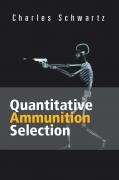“Looking first at the bare gelatin results, on average, the sampled bullets penetrated 35.5% deeper into the clear synthetic product than they did in the organic, 10% calibrated gelatin, with a range between 34.4% (the 135+P Hornady Critical Duty) and 36.3% (the standard pressure, 124 grain Federal HST).”
Source:
https://www.policeone.com/police-pro...kEYB93TAd5o6J/




 Reply With Quote
Reply With Quote



